Fields of Green: It’s Always Greener on the Other Side
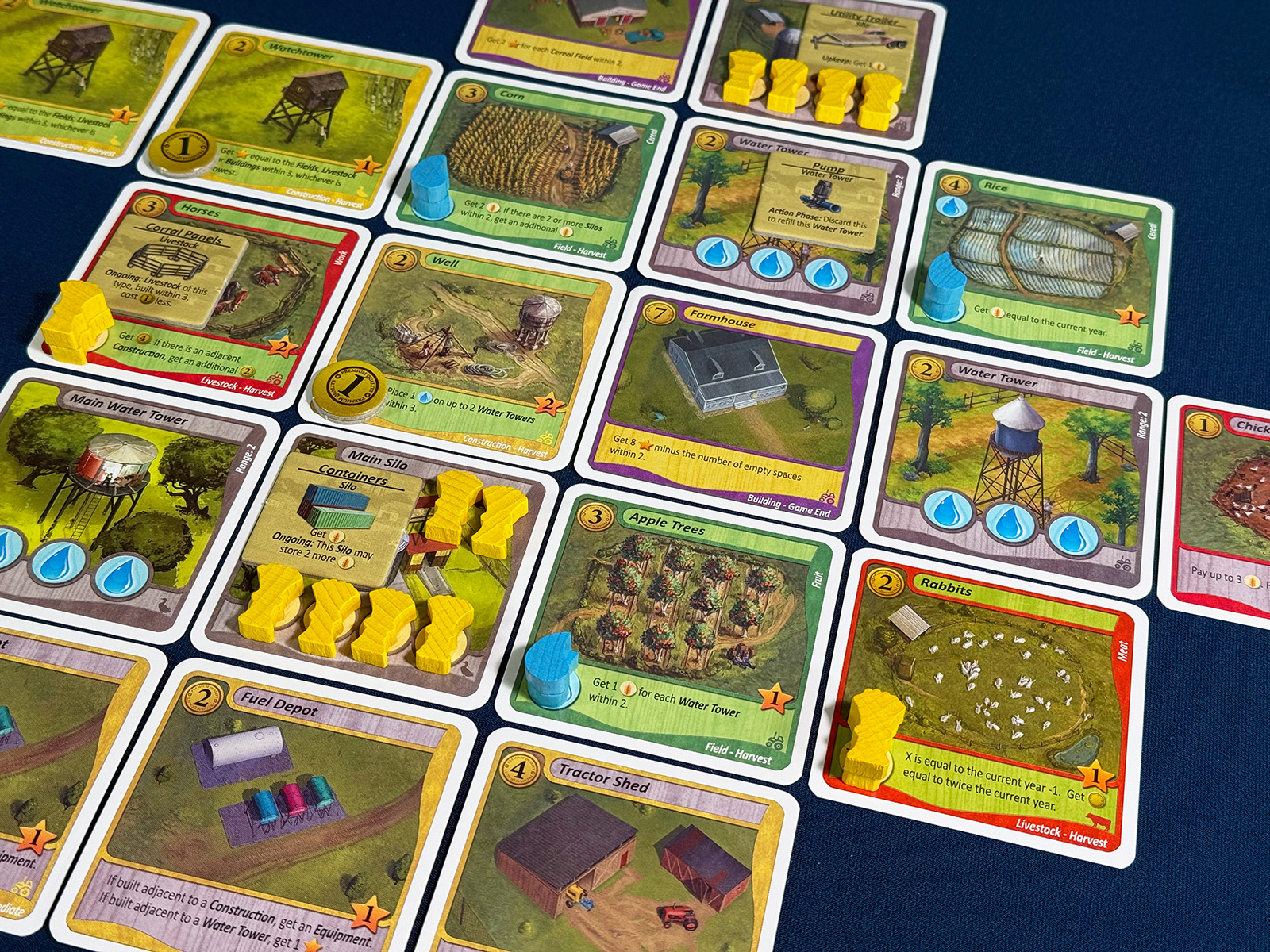
Set out to build a bustling farm over several years with many harvest abilities in the fields and livestock in Fields of Green.
For many years, I’ve played Fields of Green dozens of times… And I’ve never come close to scoring well! Although it’s been one of my top solo games, I wanted to revisit it to understand what’s earned it that built-in honor recently. The artwork is lovely and relaxing, often with calm scenes that feature lots of fun figures to locate. It was to be a farming day for me!
Game Overview
Game Name: Fields of Green
Publication Year: 2016
Designer: Vangelis Bagiartakis
Artists: G. Bobrowski, T. Jedruszek, & N. Robinson
Publisher: Artipia Games
Solo Mode: Included in Fields of Green: Grand Fair
Each year features a card draft to add to a farm. A trio of solo requirements help shape decisions, and it comes down to managing resources. Harvest abilities help add to the value of a farm, but there’s an important balance to find before the fourth year ends. So many different cards to see, too!
First Play
January 27, 2019
Complexity
3
Latest Play
October 28, 2025
Expansions
5
Setup Time
10 Minutes
Lifetime Plays
44
Play Time
35 Minutes
High Score
89
Game Area
34" x 28"
Low Score
0
All the Card Types
A core part of gameplay is centered around the different cards. Buildings, constructions, fields, and livestock are all possibilities to add on… At the right cost, of course!
The solo mode involves a draft that adds 2 of each type, along with a few more of 3 other types. This creates a lot of options, yet is also in direct competition with the awards.
I had to build a minimum of 3 work livestock, 3 cereal fields, and 5 constructions in order to even qualify to win.
That can be a major problem, as the luck of the draw often means there are sub-optimal choices that must be made.
Tiny Beginnings
Play always begins with a water tower and silo, which are used to store resources. Water is integral for building up fields, and food is typically used to feed various livestock.
The giant tractor isn’t needed in solo, yet I always enjoy adding it to the play area! More useful is the early planning module, which offers up a discount for building on the card.
Interestingly, I haven’t used the expansion attractions in a long time. I had fun with them in the past, yet no more.
I’ve found that there is a lot to think about in terms of resource requirements… I don’t need more to think about.
First Year’s Growth
There were some useful cards in the first card draft, and I made some progress towards the solo goals! However, I was a little let down by the poor choices I was forced to make.
Purple building cards are all designed for final scoring, and it can be very hard to start off with any of them… Especially with the high early costs without any future profits.
The farmhouse was in the perfect spot, yet I felt like I wasn’t going to meet the solo award requirements. Lots of stress.
I’ve enjoyed the challenge of making it all work, but I kept in mind how I’ve never scored well after almost 50 plays.
The Start of Trouble
Things seemed to improve a little bit during the second year, and it was fun to see the card interactions work out!
At the same time, I realized that I was starting to struggle with this tiny text. It’s not bad when drafting cards, but the play area spreads out a great deal and this can be hard to see.
Harvest costs always resided in the bottom left, so I didn’t struggle too much with them… But the icons on the water towers and silos mixed in and I had to do a few double takes.
It was unusual that I couldn’t really grasp the fun I used to have, but I wondered if this game had run its course.
When the Past is in the Past… Time to Let Go
I don’t know exactly when this solo experience stopped working for me, yet I noticed that even in fairly recent plays, I struggled to score well and automatically assumed my past love of it remained. That’s not a knock against the game, but more of an observation about my changing tastes. It’s also possible I got everything I was going to get out of it.
This is why I don’t assume my favorites are going to be at the top of my list forever. Many stay that way, but sometimes, it’s time to bid farewell to preserve the good times. I wasn’t wrong when I loved this game in the past: Those were great times!
Yet I know that not every solo game will stick with me forever. The memories certainly can through all of my reports, yet I don’t need to keep everything. Indeed, I don’t imagine what it would be like to keep trying to fall back in love with this one. It had its time, I’ll always appreciate it for the enjoyment, and it’s now ready to move onto a new home to share that joy!
Filling Up the Silos
The third year looked very promising, although I had to shift over to picking up more fields than livestock. So much extra food piled up after the harvest phase!
Having a sense of growth is wonderful within the game, yet I never felt attached to my choices. I chose 1 of 3 cards, often based purely on meeting the solo requirements.
Stories only showed up after the fact, like how the rabbits probably escaped once to eat all of the fallen apples. Ha!
Yet going into the final year, there was more of a sense of dread as I desperately needed to collect the right cards.
The Final Farm
Gameplay was still pleasant enough, and I managed to get the right cards at the very end to be eligible to score! Yet the experience felt rather… Bland and filled with tension.
I recall the times I had a great time adding thematic presence with the attractions. There are some very fun ones! But over time, they felt like they distracted me a lot.
Without meeting the solo requirements, a game ends in an immediate loss. So losing focus can be very disheartening.
Although I know I had a great time with this one years ago, I could tell that it was time to part ways with it.
Scoring Tier Woes
After nearly 50 lifetime plays, my highest score sat at just 89 victory points. That was still something to take pride in, yet most of my scores have fallen below 80 victory points.
The final score isn’t everything, and I’m not too concerned about whether I won or not. But there was no sense of getting better with more experience. It was just… Luck.
Sometimes, the right cards come out. Other times, it’s an uphill climb from the first year just to earn a few coins.
That lack of agency was what really soured me. I could make the best choices, and still have a bad outing due to chance.
Overly Random Events
I’ll also note that I use the random events module, which can be a fun way to add more unpredictability. However, I’ve found that it can be very odd when played solo.
Usually, it evens the playing field for all players with a bonus or setback. Here, the cards either gave me a boost or put me in an even worse position. Far too random to enjoy.
Still, I had fun with this one many years ago! It’s always been nice to admire the artwork with its relaxing scenes.
Another good lesson for me: A favorite game may not stay a favorite forever, but those times can still be good memories!
Session Overview
Play Number: 41-44
Main Expansion: Fields of Green: Grand Fair
Other Expansions: Many (4)
Solo Mode: Included in Fields of Green: Grand Fair
Play Details: Early Planning & Events Mini-Expansions
Outcome: 68, 65, 0, 70 (1 Win & 3 Losses)
With the same set of solo goals, I barely made any difference in my final score with tons of strategies. And that’s right… I failed to get enough cereal fields in one play, which was a major disappointment. Better to bid farewell to this one now so I can hold onto those happy early memories of it!
%
40 Plays
Affordability
Price & Value
7
Functionality
Challenges & Mechanics
7
Originality
Design & Theme
3
Quality
Components & Rules
9
Reusability
Achievement & Enjoyment
3
Variability
Distinctness & Randomness
7
+ Pros (Positives)
- Each card features a delightful little scene that showcases a mixture of work and relaxation for a nice atmosphere.
- There are interesting decisions to make in terms of the cards and placements, which offers satisfying gameplay.
- Wooden components make the harvest phase quite nice with the water and food that are placed directly on cards.
- Seeing a farm grow from practically nothing into a bustling enterprise is exciting and feels like an accomplishment.
- Even though there are duplicate cards present, these can work together in clever ways for additional scoring bonuses.
- The solo drafting phase is done very well with choices and little overhead beyond shuffling together more cards.
– Cons (Negatives)
- There is a great deal of luck involved with the cards that come out, and sometimes, it’s impossible to actually score.
- Although the harvest costs are large, the main card text is very small and light, making it hard to see from afar.
- With the way cards are placed, the play area can expand in many different ways that can get very unruly quickly.
- Since completing the solo goals is critical, there can be a lot of stress and tension in an otherwise calm solo game.
Victory Conditions
Score 70+ Points
- Overall Goal Progress 67%
Goals and Milestones
Score at least 70 points.
Score at least 80 points.
Score at least 90 points.
Continue the Conversation
What is your favorite part of Fields of Green? Do you have a favorite way to play with the attractions or modules? I recall how much I used to enjoy playing, but that time has passed. Not a problem! It was fun while it lasted, and reaching over 40 lifetime solo plays is no easy feat. Time to put away my farming attire for now… Until I find another farming game. Ha!
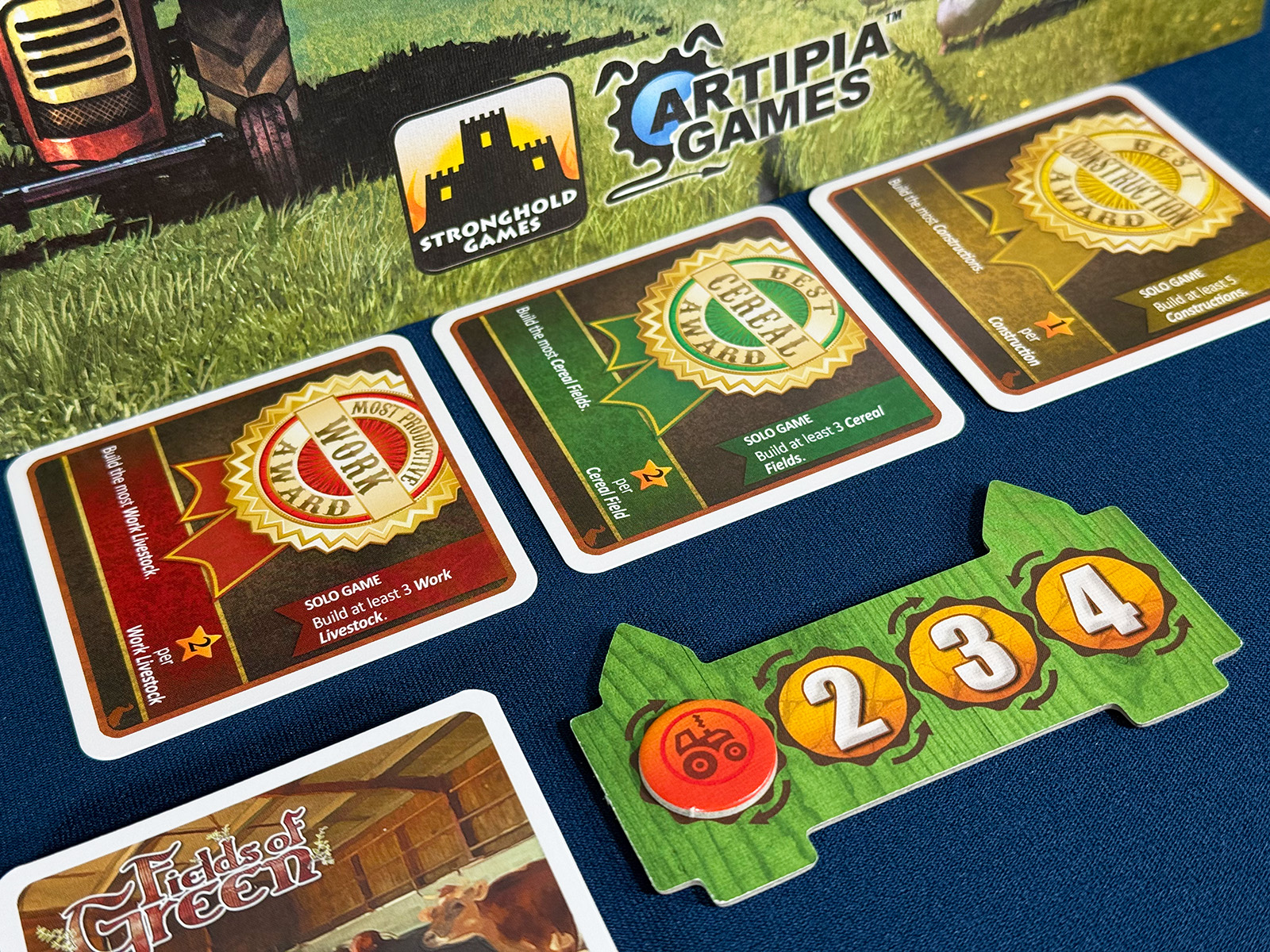

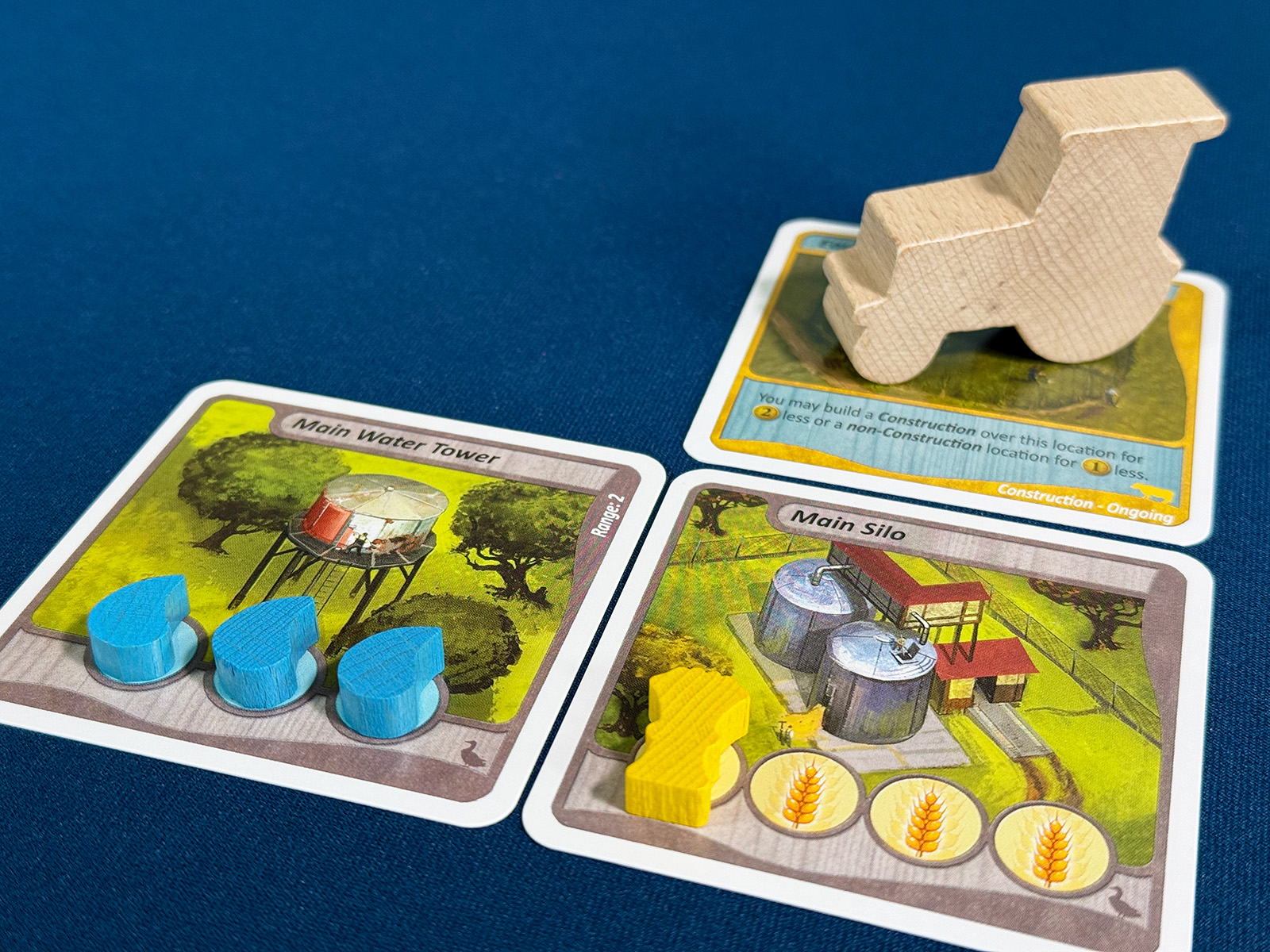
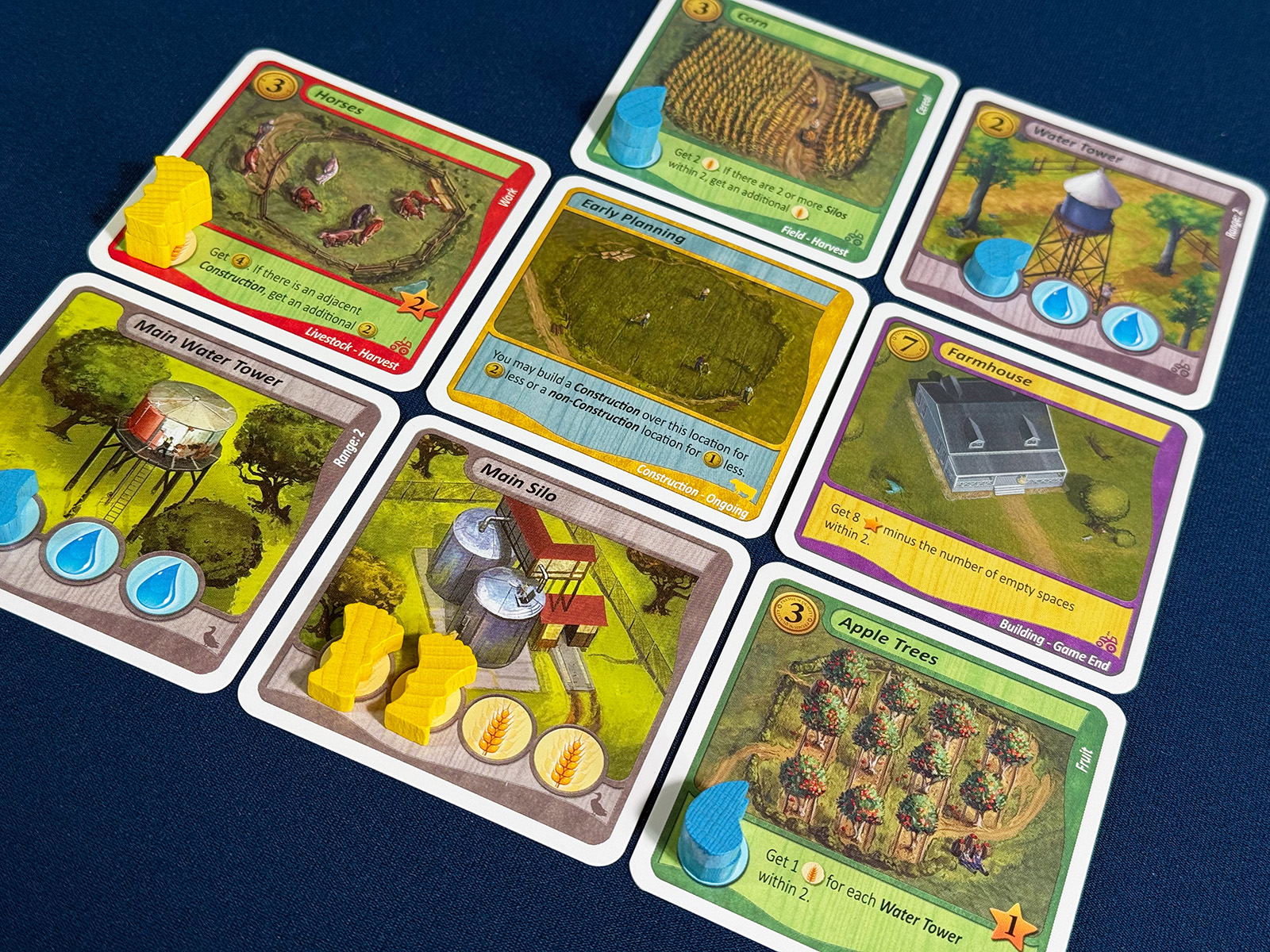

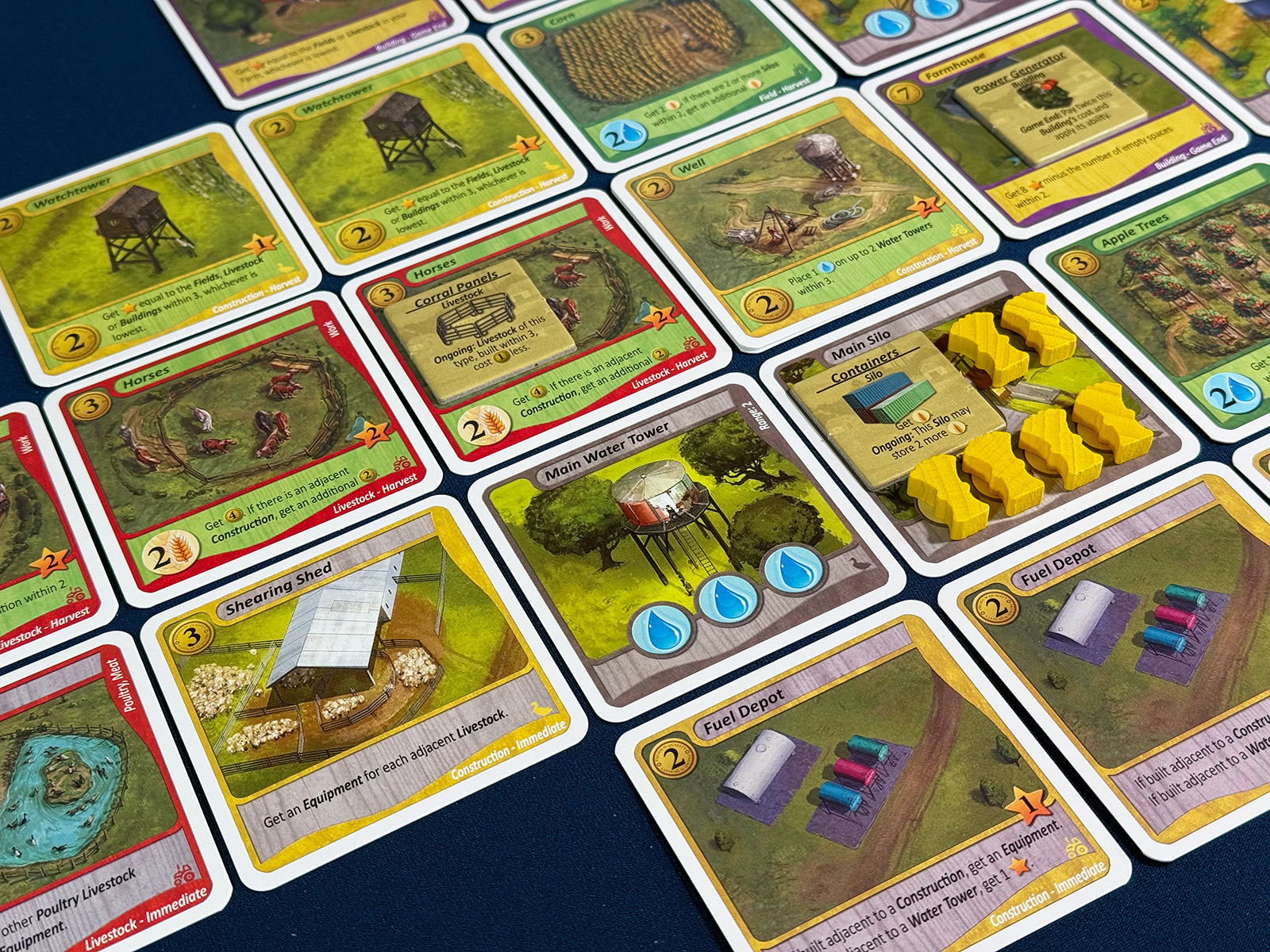
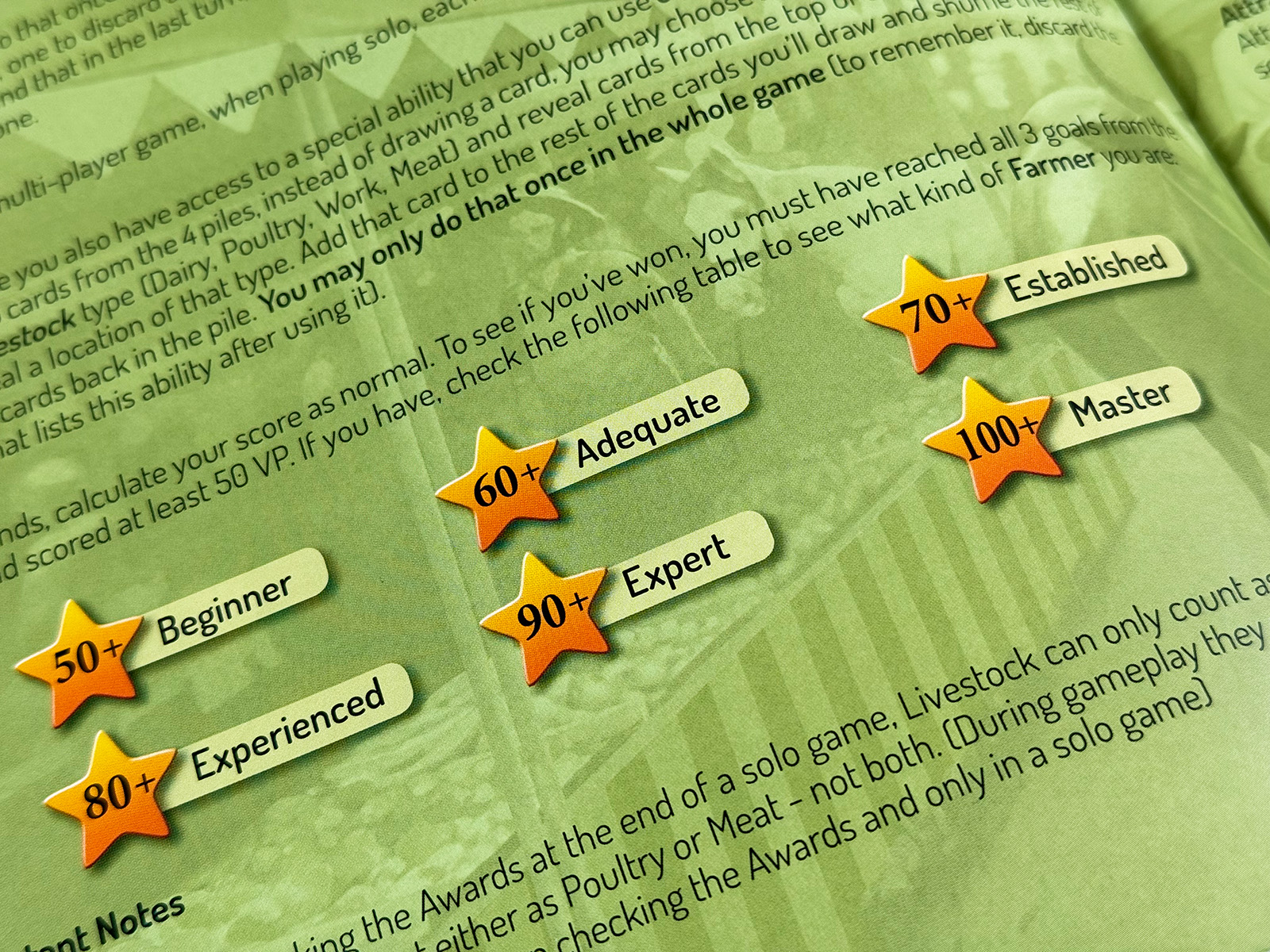

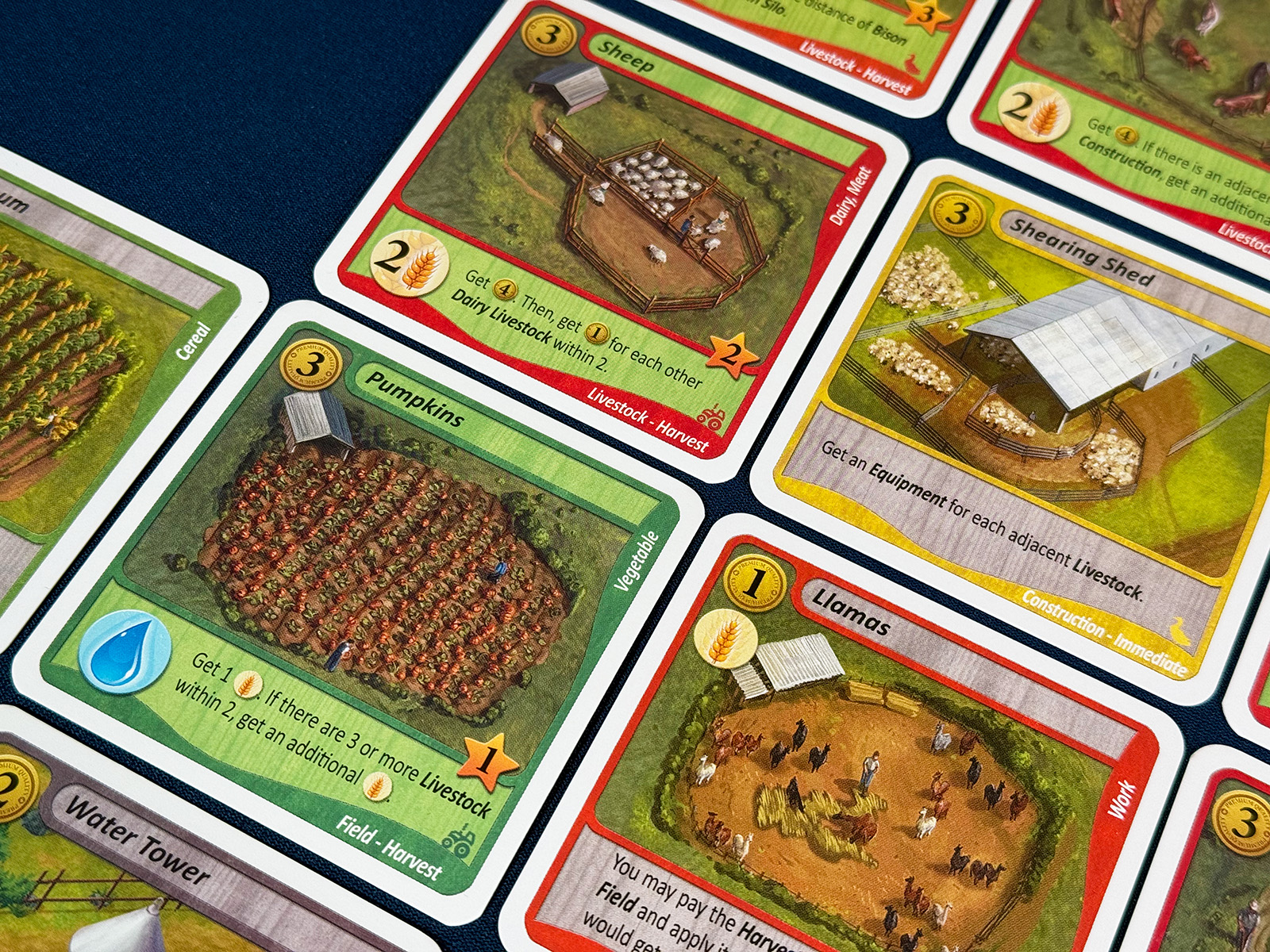
0 Comments